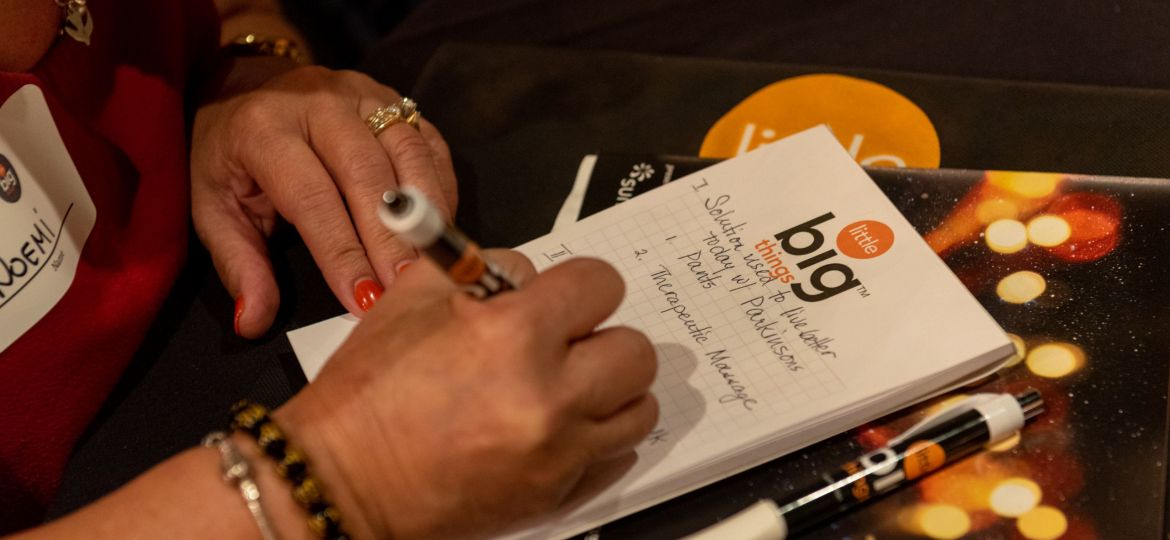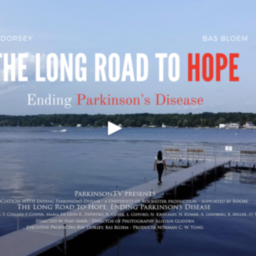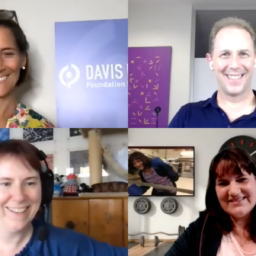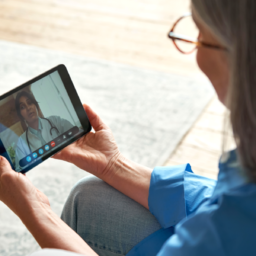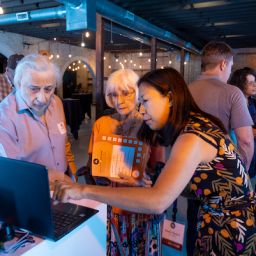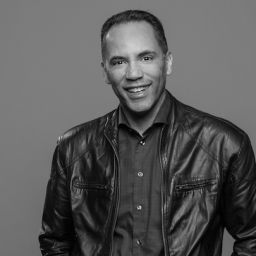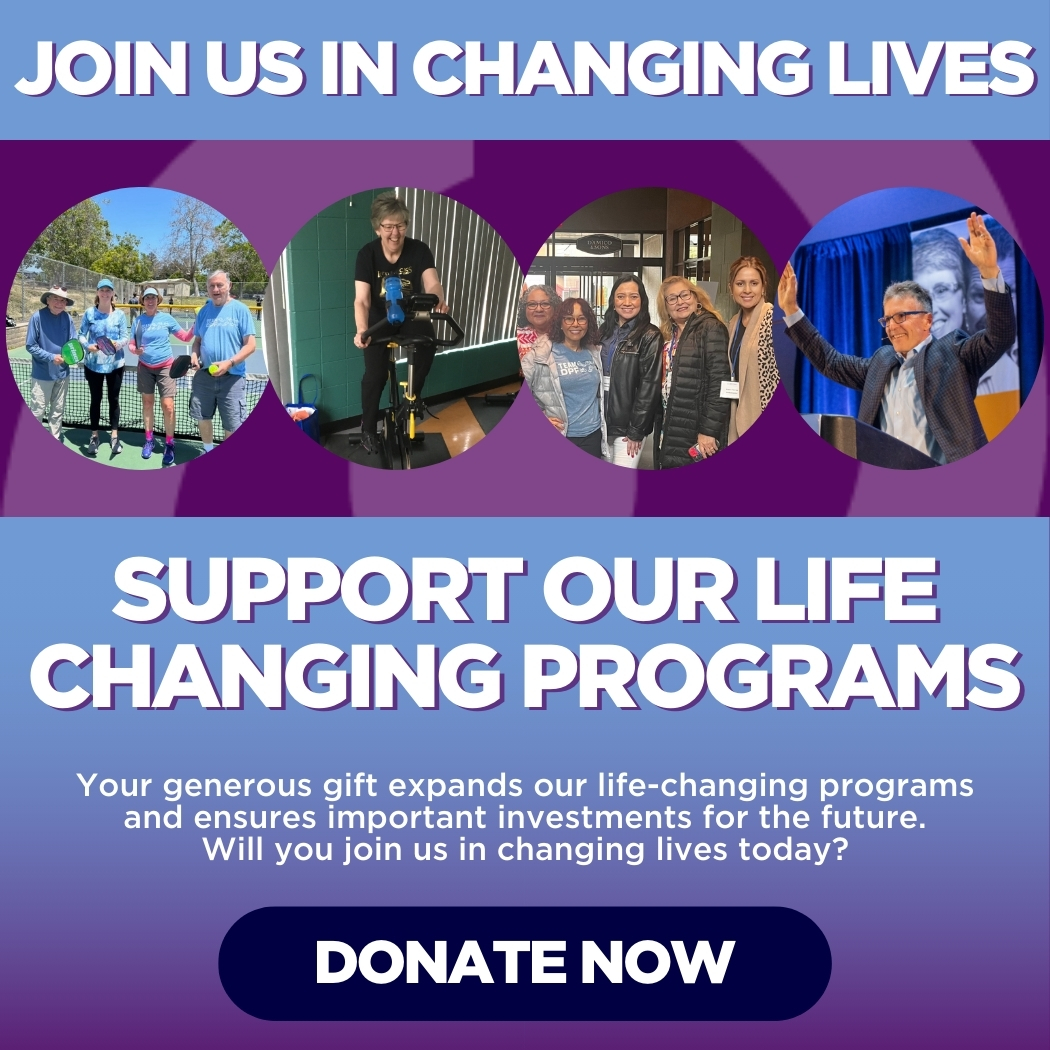All photos Chris Ocken
What do a piece of 10-inch square piece of silicon, a Nordic ski pole and an eBike have in common?
All are everyday items that help people with Parkinson’s live well. And a couple of weeks ago in Austin, TX, we called them Parkinson's innovations or the Little Big Things™ that provide meaningful solutions to those living with Parkinson’s.
For those of you who were unable to attend the event live in Austin or live online, we wanted to share a few of the takeaways from the day. And, if you do want to watch it, you can watch the entire live event here. It was unlike any event we’ve ever done, and we left feeling more inspired than ever to keep working with our extraordinary Parkinson’s community.
Speaker Takeaways
John Dean, a member of the Davis Phinney Foundation Science Advisory Board and CEO of Triad Health AI, talked about the importance of combining movement, voice and cognitive tasks to increase the power of exercise. You can find out more here and watch his full presentation here. (Starts at 9:45)

Dr. Ray Dorsey, Professor of Neurology and Director of the Center for Health + Technology at the University of Rochester Medical Center, drove home the reality that if something doesn’t happen fast, Parkinson’s is on track to double in the next twenty years. Not only does this mean more and more people living with it, but it means more and more people unable to access the care they need to live well with it. To that end, he has been working on bringing care to everyone everywhere through telemedicine. Watch his full presentation here (beginning at 51:28) to learn about the benefits of telemedicine and how to advocate for better care in your own backyard.
Tim Hague brought many in the audience to tears as he talked about his diagnosis at a young age, his quest to win the Amazing Race Canada (and win he did) and what that path inspired him to do, which was to create, lead and champion a healthy Parkinson’s community in Winnipeg. He’s a shining example of how connecting with your community and giving back can help you live well with Parkinson’s. His presentation starts at 26:34.
Maura Horton is the founder and CEO of Magna Ready, an apparel brand developed for people with mobility challenges that uses magnetic closures instead of buttons or snaps. Maura created her line of clothing to assist her husband, one of the top-ranked college football offensive line coaches in the country, who was diagnosed with Parkinson's at age 48. Her solution to problematic buttons on dress shirts was at first a Parkinson's innovation that simply allowed her husband to travel unassisted with his team; however, it has now grown to support customers all over the world. If you’re a fan of football, you’ll love how she talks about moving the ball down the field (starts at 1:03) and what that has to do with Parkinson’s.
Christina Soriano and Christina Hugenschmidt are from Wake Forest University in Winston-Salem, NC. An Associate Professor of dance and an Assistant Professor of Gerontology and Geriatric Medicine, respectively, The Christinas, (yes, they call themselves that), are working on a three-year, $1.5 million research grant from the National Institutes of Health focused on how improvisational dance can affect the quality of life for people with neurodegenerative conditions. During their IMPROVment classes, people exercise by guiding their own movement with no concern about whether they are doing something correctly. It’s never about getting it right. It’s always about getting it going. Watch their presentation that starts at 1:14 here.
How to Floss

Two of our very favorite Parkinson’s physical therapists, Sarah King from Invigorate PT and Mike Braitsch from Tribe Wellness, brought the house down with their instructions and demonstrations on how to floss. Watch their 10-minute movement break (starts at 41:00) whenever you need a pick me up.
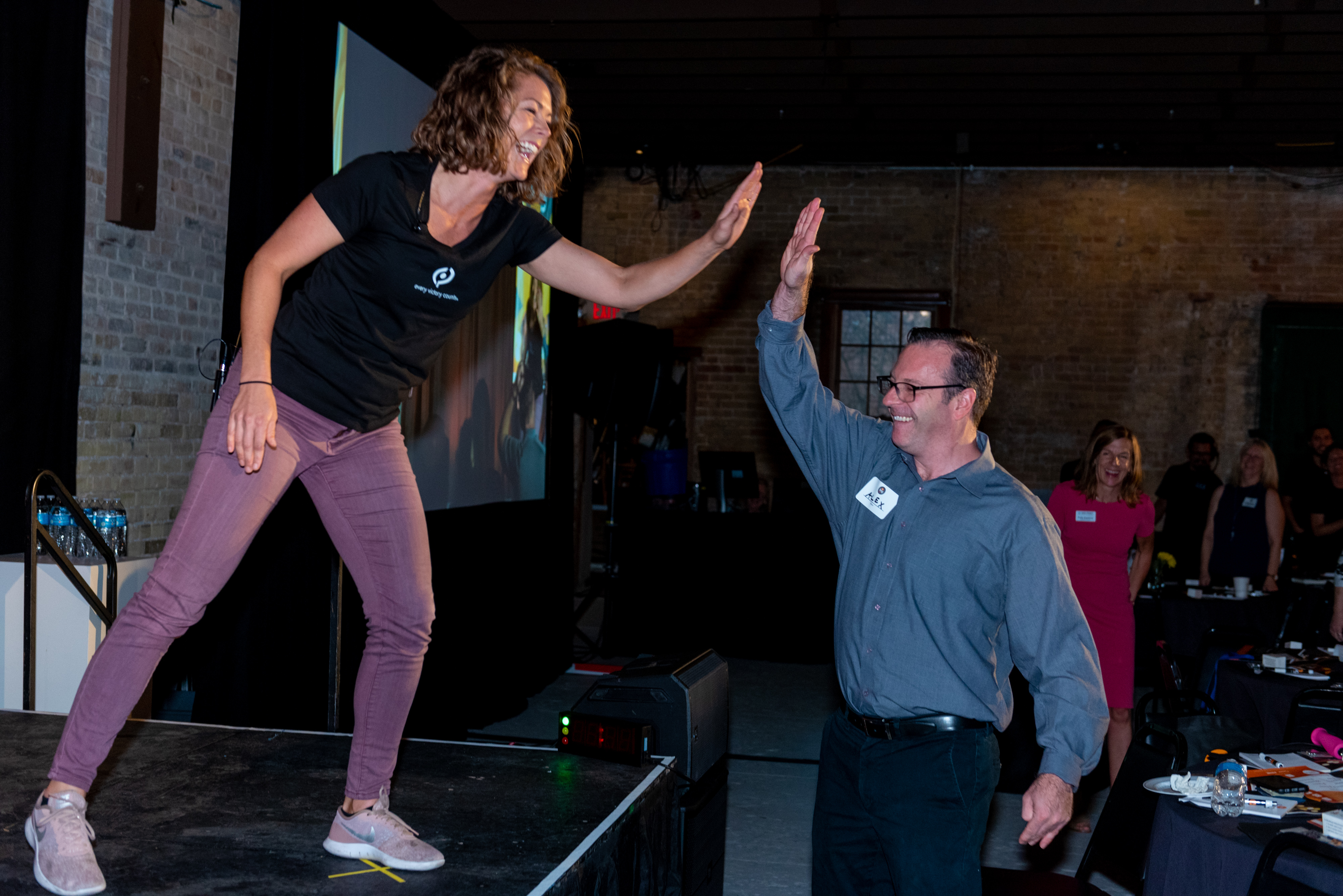
John Dean led the crowd through a high-energy, high-volume movement break to wrap up the day.
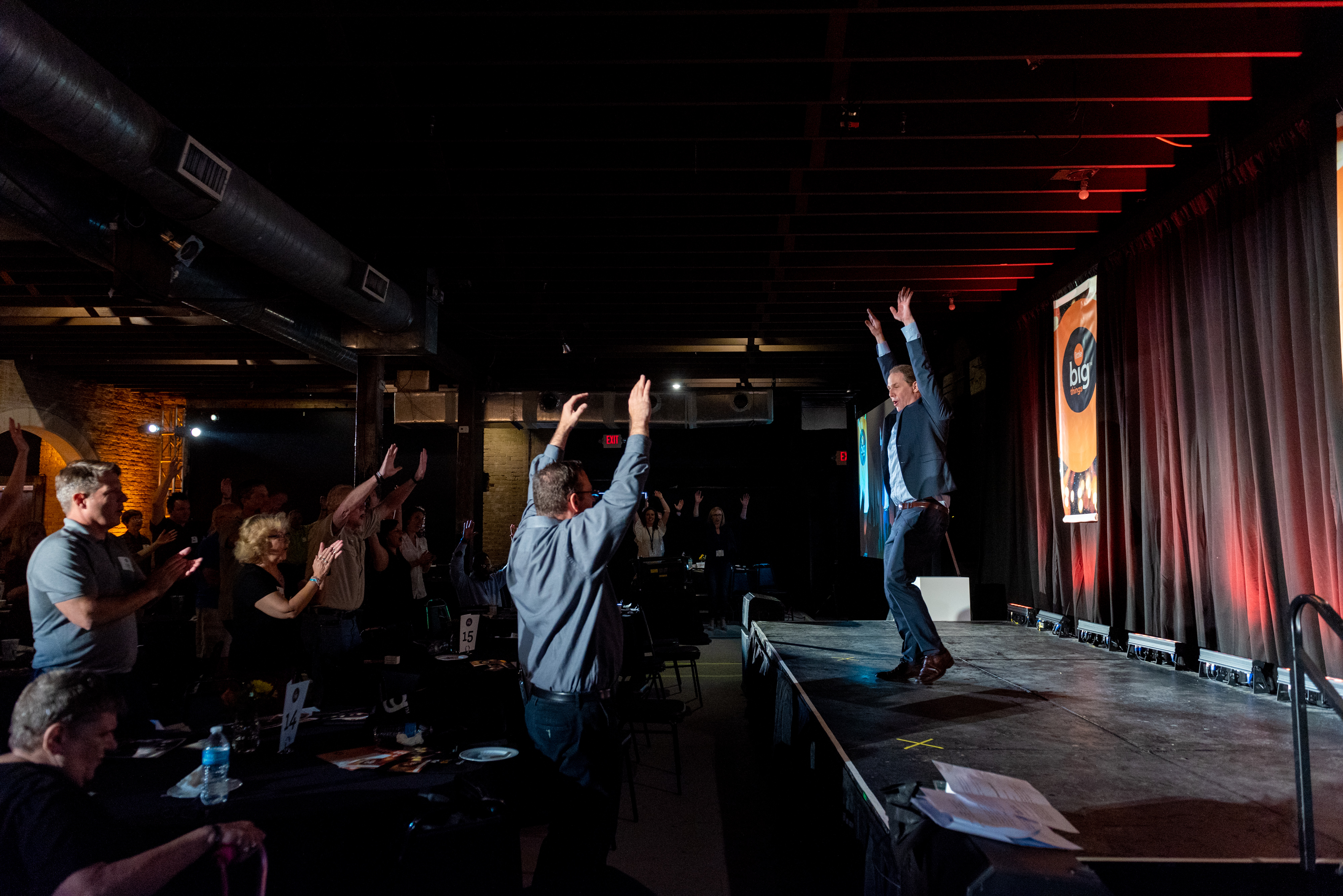
Innovation Hall
Throughout the day, attendees had the opportunity to see innovative new products and meet company representatives, many of whom were founders. It was such an incredible display of Parkinson's innovations that we want to make sure you know where to find them as well. If you want to watch all of the interviews we did with the innovators, watch the recording beginning at 1:30 here.
The Calibrace+ from AbiliLife is a lightweight, full support back brace specifically designed for people living with Parkinson’s that lifts the shoulders to improve posture and balance. Purchase directly from the company or use their online form to download a prescription form ahead of your next doctor’s appointment.
NexStride by De Oro Devices uses visual and audio cues to assist users in overcoming freezing of gait. The adaptive design easily mounts to canes, walkers, or walking poles to restore mobility and reduce the risk of falls. The company is currently taking pre-orders for the device here and expects to begin shipping in February 2020.
Eatwell is an award-winning tableware set designed to improve mealtime experience and independence for people living with cognitive and motor conditions. Individual pieces and a variety of sets are available directly from their website.
Developed by Global Kinetics Corporation, the PKG® System is a movement recording device prescribed by your doctor and worn for six to ten days at a time. The watch-like device tracks continuous, objective data of Parkinson’s symptoms, response to medication, sleep patterns and many more factors. You can see the device in use in a short video on the company’s site here.
MagnaReady makes adaptive apparel for men, women and children using magnetic closures in place of buttons or snaps for quick, stress-free dressing. Their website has a wide range of styles and sizes.
Naboso Barefoot Technology produces proprioceptive shoe insoles and therapeutic mats designed to improve dynamic stability and movement through sensory stimulation of the feet. A wide range of insoles, mats and flooring are available with a specific insole design made for rehabilitation of neurodegenerative conditions available here.
Path Finder by Walk With Path is a device worn over your shoes that provides visual cues to counter freezing of gait and to help alleviate shuffling. Currently available only in Europe, Canada and Hong Kong the company can be reached for questions from the United States here.
SpeechVive is an in-ear device designed to give voice back to people living with Parkinson’s by changing what they hear. The device senses when the wearer is speaking and plays background sounds which immediately informs the brain to encourage the wearer to speak up. The company has an easy-to-use online form to learn where you can find a clinic to try SpeechVive
Tango belt is an unobtrusive, wearable belt with smart movement sensors that softly deploy hip-protecting airbags in the event of a fall. The belt will additionally alert caregivers upon activation. The device is currently in use only at senior care facilities though information for individual use and pre-order details can be found here.
Triad Health AI uses in-home smart speakers like Amazon Alexa and Google Home to provide an interactive exercise experience that combines movement, voice and cognition development. Sign-up here to learn more about how to get started exercising differently.
ACTIVATOR walking poles by Urban Poling were developed by an occupational therapist and gerontologist to do more than offer basic stability. The ergonomic design engages the body’s core muscles, uses the arms for improved overall movement, and puts less strain on the wrist. A range of sizes and special editions is available on the Urban Poling website along with exercise and education guides.
The Zibrio SmartScale uses technology drawn from the US space program to easily and accurately assess overall balance in your own home with a simple, eyes-open standing test that takes only a minute. Information from the scale connects to an app on a smart device that can help you and your doctor monitor changes and look for possible risk factors such as falls. Two models are available from the company on their website.
eBikes are an exciting new technology bringing the joy and exercise benefits of bicycle riding to more people. Electric, pedal-assist bicycles use a small, integrated electric motor that supplements the rider’s input to the pedals. Concern about steep hills or sudden fatigue while out riding can be offset by the additional power of an eBike and can restore confidence in riding for many people who still wish to ride for exercise or socialization. eBikes are available from every major manufacturer and nearly every local bicycle retailer. We wish to thank Bicycle Sport Shop of Austin for bringing a demonstration model and their expert knowledge to our event. While your local shop may vary, here’s a look at the selection carried by Bicycle Sport Shop.


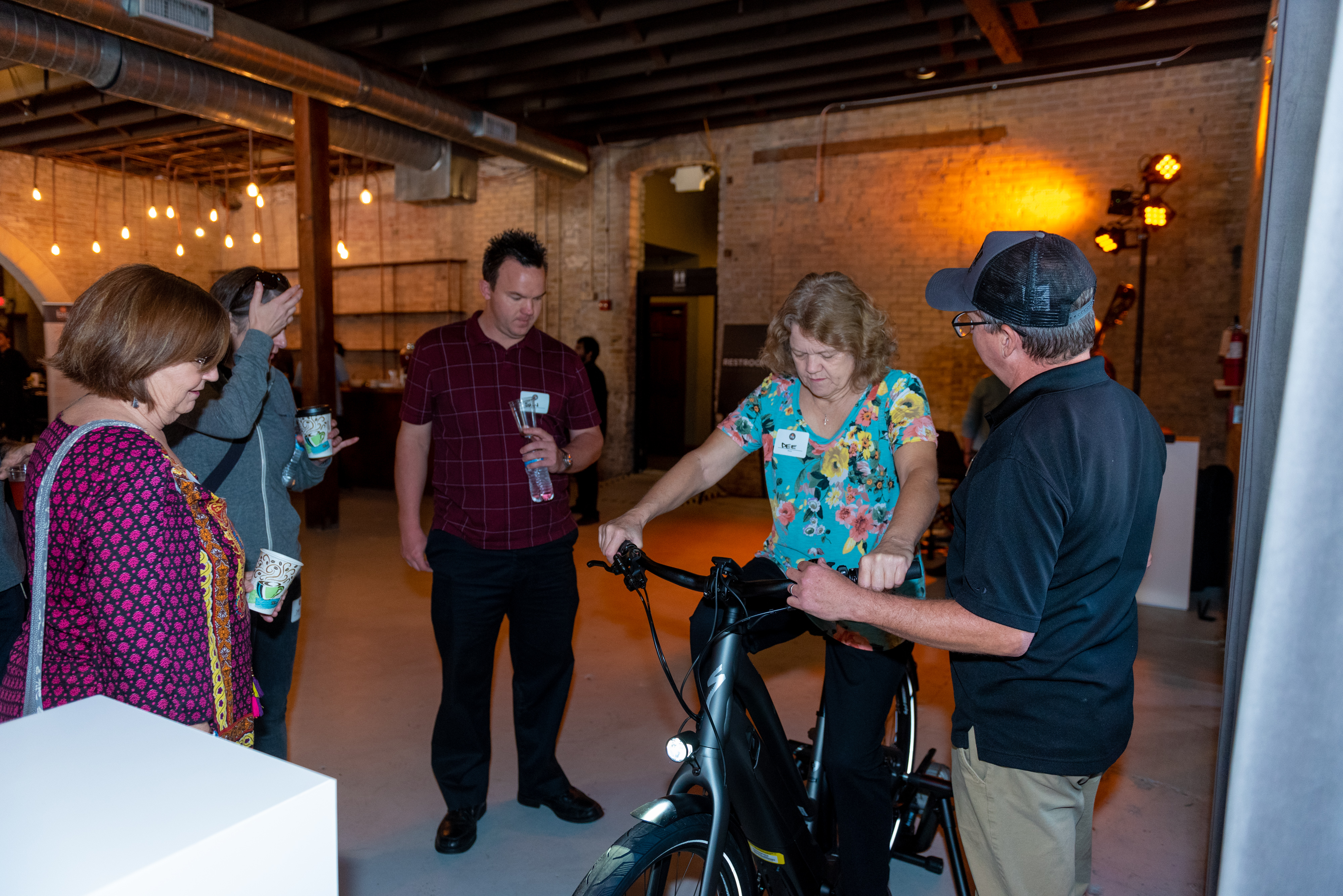
One Last Little Big Thing - Take Action
At the conclusion of his presentation, Dr. Dorsey encouraged everyone to advocate for increased Parkinson's research.
He cited HIV/AIDS as an example of advocacy that worked. AIDS was a fatal condition in the early '80s, but it was transformed into a chronic condition with near-normal life expectancy by the late '90s through the actions of unified activism and the research delivered from it. Research for HIV/AIDS receives three-billion dollars in annual funding from NIH while Parkinson's receives $180 million. Congress can only act if and when we speak up. Visit our recent post about the Parkinson's Policy Forum in Washington, DC to learn how you can share your concerns with your Congressional representatives.
It's a little thing for one of us to raise our voice, but it becomes a big thing when all of us do.
What Innovations Have You Used?
If you've used any of the innovations above, we'd love to hear about it. Or, if you've used one you think we should know about, we want to hear about that too. Share your experiences in the comments section.
Oh, and if you're wondering what the 10-inch square piece of silicon is useful for, ask Jan Grimes. A career concert pianist, she spends a lot of time sitting. Her dyskinesia causes her to move a little bit more than she'd like, however, so when it's time to play, she puts one of those square pieces on her seat, and it prevents her from sliding all over her chair.
Presented in partnership by:

Working together to help shape the future of living well with Parkinson’s


